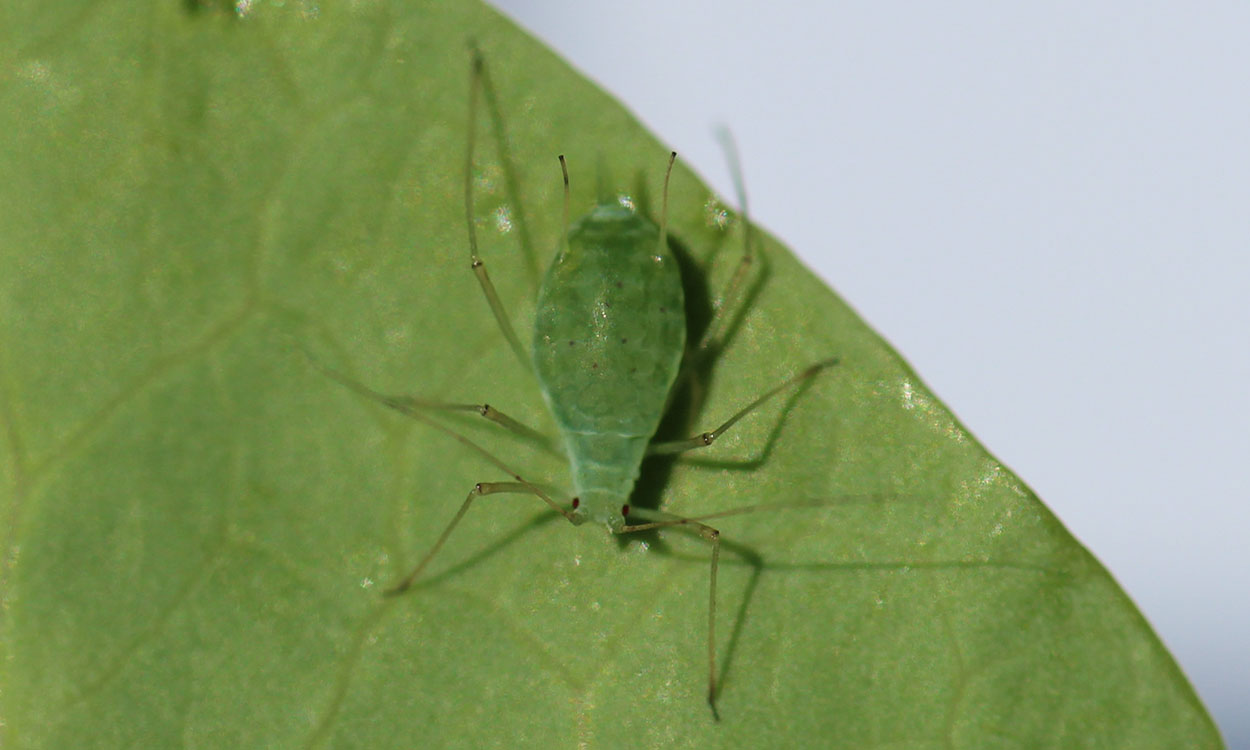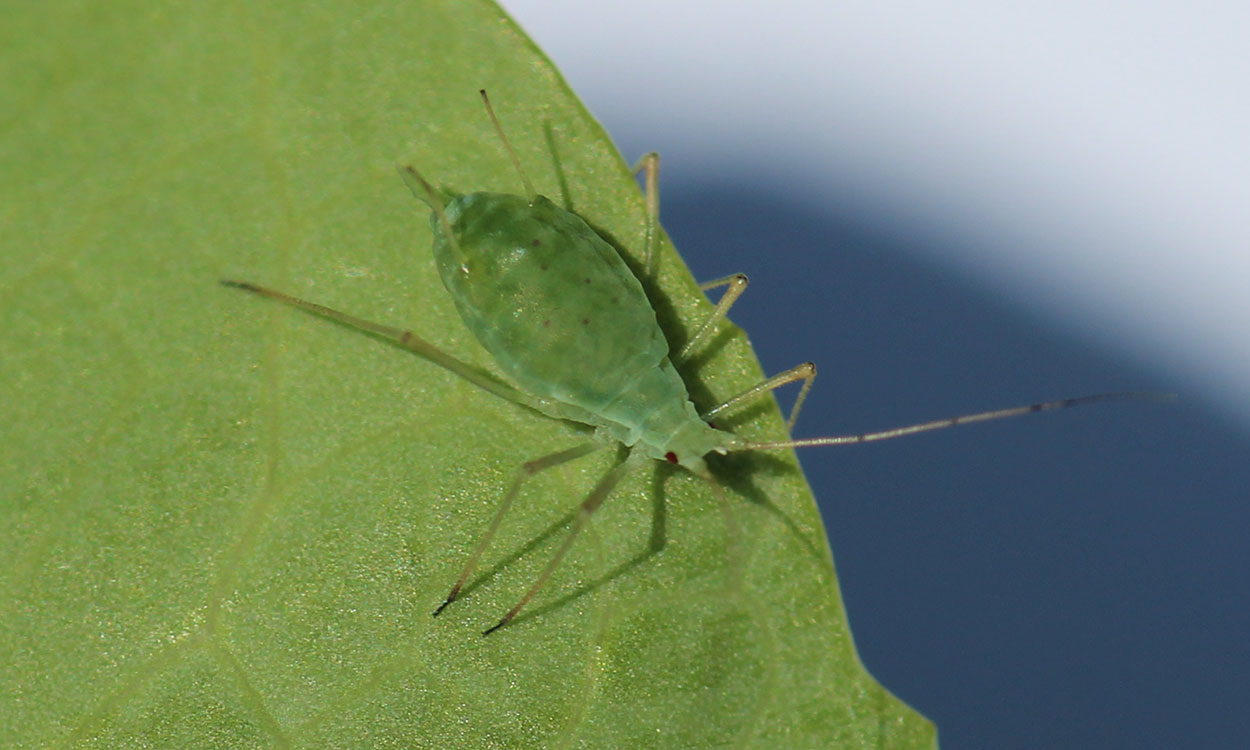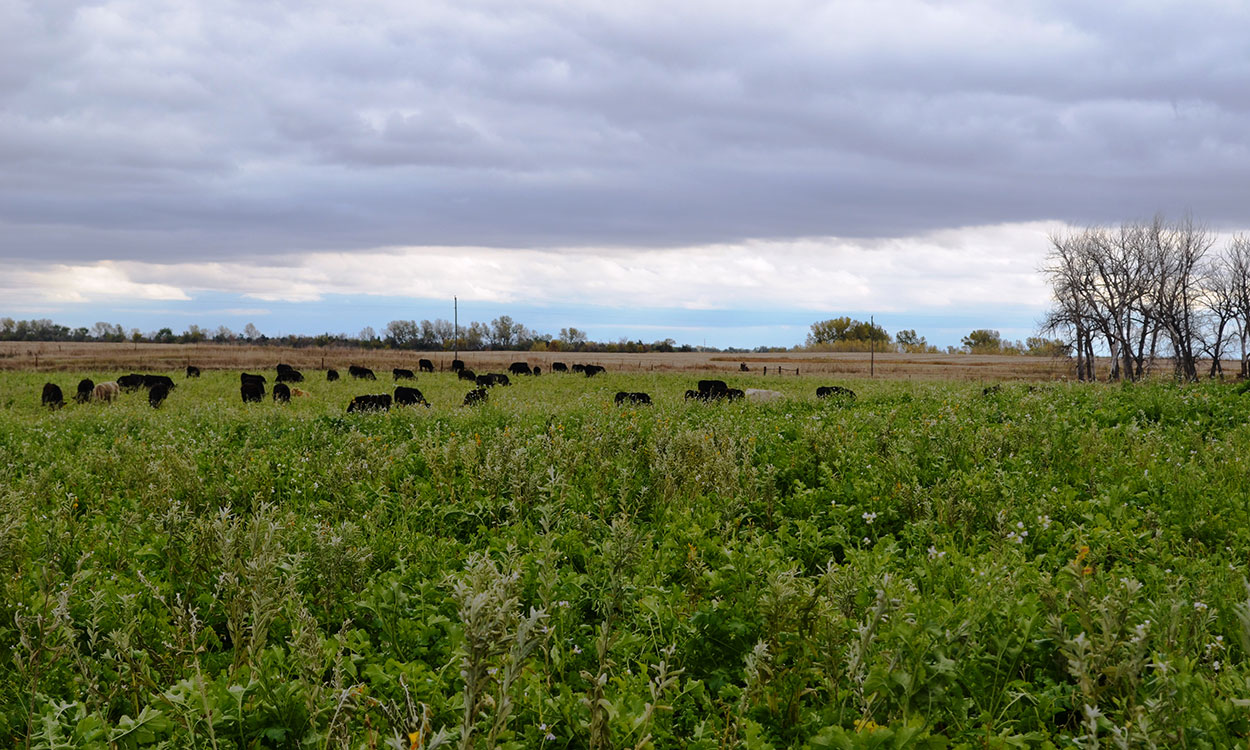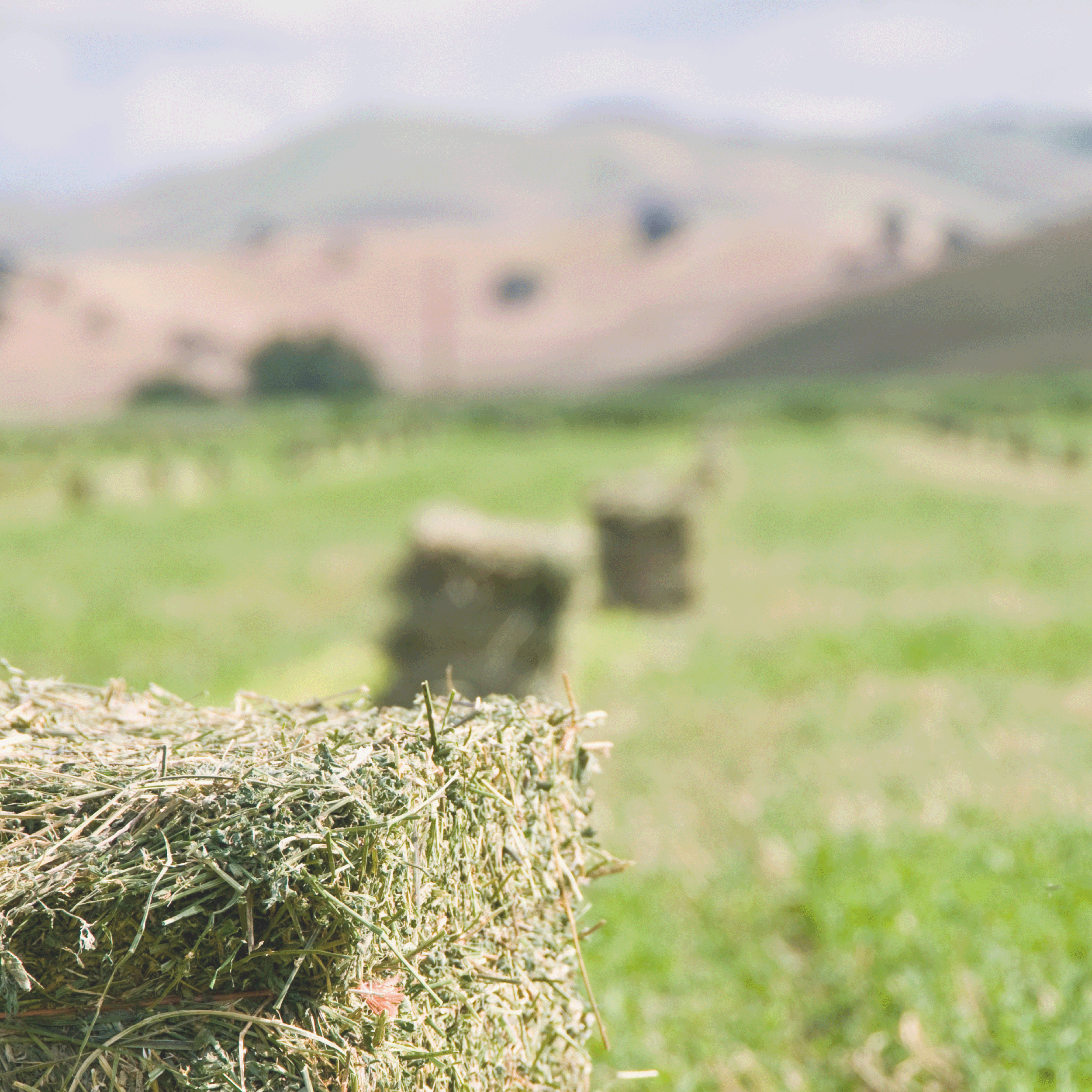Written collaboratively by Adam Varenhorst, Philip Rozeboom, Patrick Wagner, and Brad McManus.
Originally Submitted: May 26, 2023
While scouting alfalfa fields for alfalfa weevils, we observed large populations of pea aphids. Pea aphids can cause yield reductions to alfalfa when large populations are present. Prolonged feeding by these populations can even cause the alfalfa fields to take on a “golden” color. Although there are many natural enemies or predators that are attracted to fields with pea aphid infestations, we noticed that these predator populations were relatively low at this time. The predators can include multiple species of lady beetles, minute pirate bugs, green lacewing larvae, damsel bugs, and hoverfly larvae. When adequate populations of these insects are present, they can be efficient at managing pea aphid populations. Pea aphid populations increase rapidly when temperatures are around 70 degrees Fahrenheit. Although our forecasted temperatures are above this optimal level, there is still a chance pea aphids could cause issues due to the low predator populations. Pea aphids will also have a greater impact on drought-stressed plants.
Identification
Pea aphid nymphs and adults vary in size, but adults are approximately one-eight to one-quarter of an inch in length, making them noticeably larger than other aphid species present on alfalfa. The nymphs and adults are generally light, green-yellow or dark green in color. However, there is the possibility to observe pea aphids that are a pale pink color. Pea aphids have long cornicles (or tailpipes) that are noticeably darker at the tips (Figure 1). A characteristic that is useful for identifying pea aphids is the dark bands present on their antennae (Figure 2). Pea aphids also have dark red eyes (Figure 2).


Pea aphids tend to colonize alfalfa throughout the entire growing season, but their population growth is reduced when temperatures exceed 90 degrees Fahrenheit.
When scouting for pea aphids, their presence can be determined by using a sweep net. The populations present can also be determined by counting aphids on individual stems. Pea aphid colonies tend to occur on alfalfa stems and the newest leaves. When large populations are present on a plant, the leaves of the alfalfa may turn yellow, and the plant may also be stunted due to the nutrient loss caused by pea aphid feeding. This type of injury is generally associated with populations that exceed 50 aphids per stem, which would be a very noticeable infestation.
Scouting and Management
Generally, pea aphid populations are not much of a problem, though it is common to see growth after the application of insecticides for a different insect pest. To stay ahead of pea aphid populations, alfalfa should be scouted on a weekly basis throughout the growing season to ensure that populations do not exceed the recommended economic thresholds (Table 1).
Economic Thresholds
|
|
||
|---|---|---|
| Growth Stage |
|
|
| Seedling |
|
|
| Less than 10” tall |
|
|
| More than 10” tall |
|
|
To scout for pea aphids in alfalfa, either a sweep net or direct stem counts can be used. If using a sweep net to sample, conduct 30 pendulum swings for each leg of a “W” or “Z” pattern while walking in the field. Count the number of pea aphids present after every 30 swings and calculate the average. Repeat this process in an additional area of the field to determine field infestation levels.
If using the direct stem counts, collect a total of thirty stems while also walking in a “W” or “Z” pattern. For each stem, carefully cut it near the soil surface, shake it into a white bucket, then count the total number of pea aphids per stem and calculate an average for the field.
No matter which method you use, while walking through the field, pay attention to the presence and abundance of natural enemy species. If numerous natural enemies are also collected in the sweep net, or observed while walking, insecticide management may not be necessary depending on the aphid populations and daily average air temperatures. However, if thresholds are exceeded, a list of insecticides that are currently labeled for aphid management in alfalfa can be found in the latest South Dakota Pest Management Guide: Alfalfa and Oilseeds.
Reference
Hodgson, E. 2009. Getting to know aphids in alfalfa. ICM News, Iowa State University Extension.


